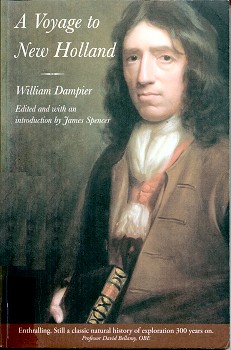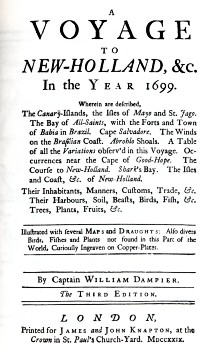 |
surfresearch.com.au
dampier :
around the world, 1684-17004
|
William Dampier : Peru, Australia & New Britain, 1684-1700.
Extracts from
Dampier, William:
A new voyage round the world : describing particularly, the Isthmus of America, several coasts and islands in the West Indies, the isles of Cape Verd, the passage by Terra del Fuego, the South Sea coasts of Chili, Peru, and Mexico, the Isle of Guam one of the Ladrones, Mindanao, and other Phippine and East India islands near Cambodia, China, Formosa, Luconia, Celebes, &c., New Holland, Sumatra, Nicobar Isles, the Cape of Good Hope, and Santa Hellena : their soil, rivers, harbours, plants, fruits, animals, and inhabitants : their customs, religion, government, trade, & c.
James Knapton, London, 1698-1709.
http://books.google.com.au

